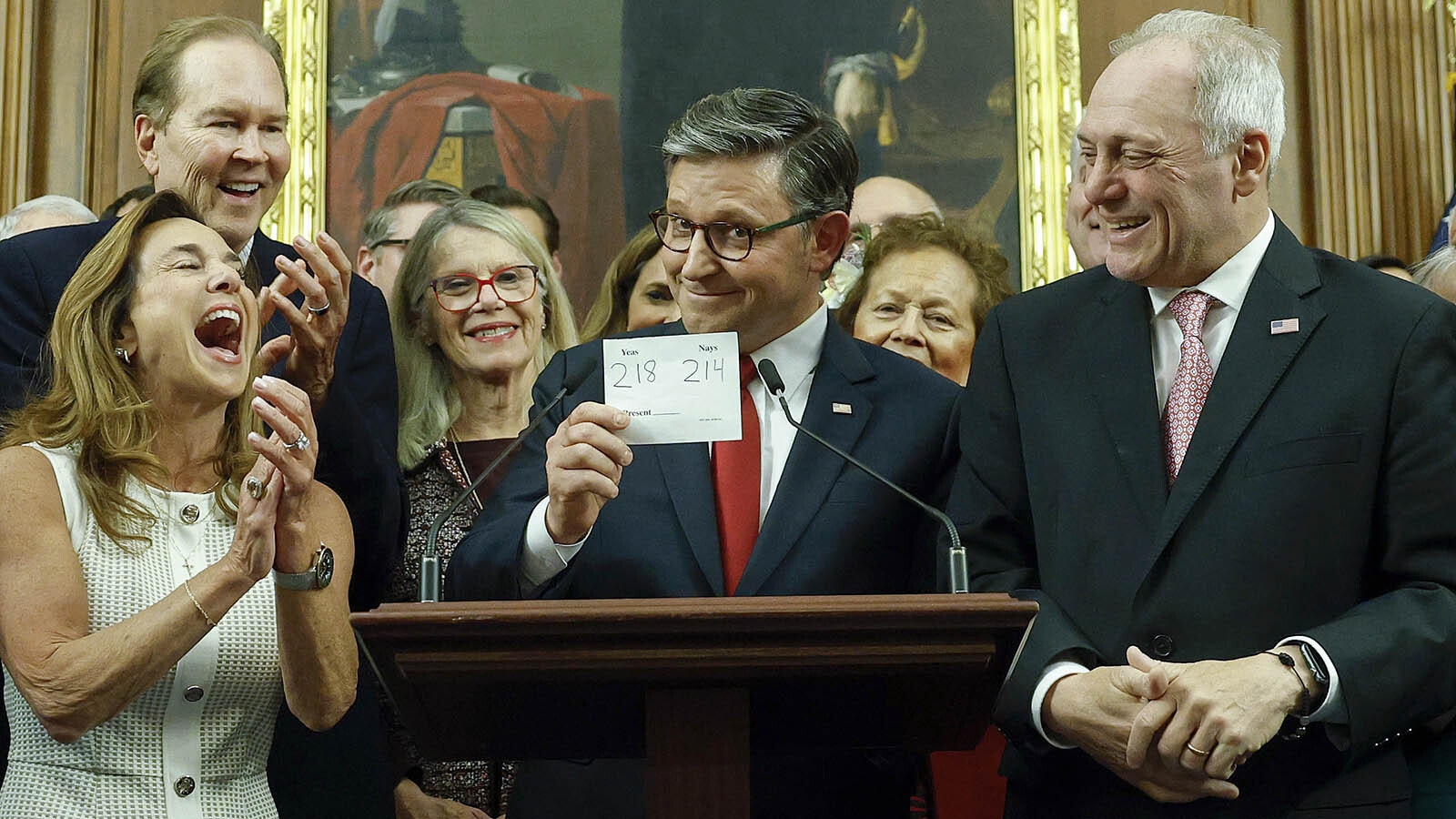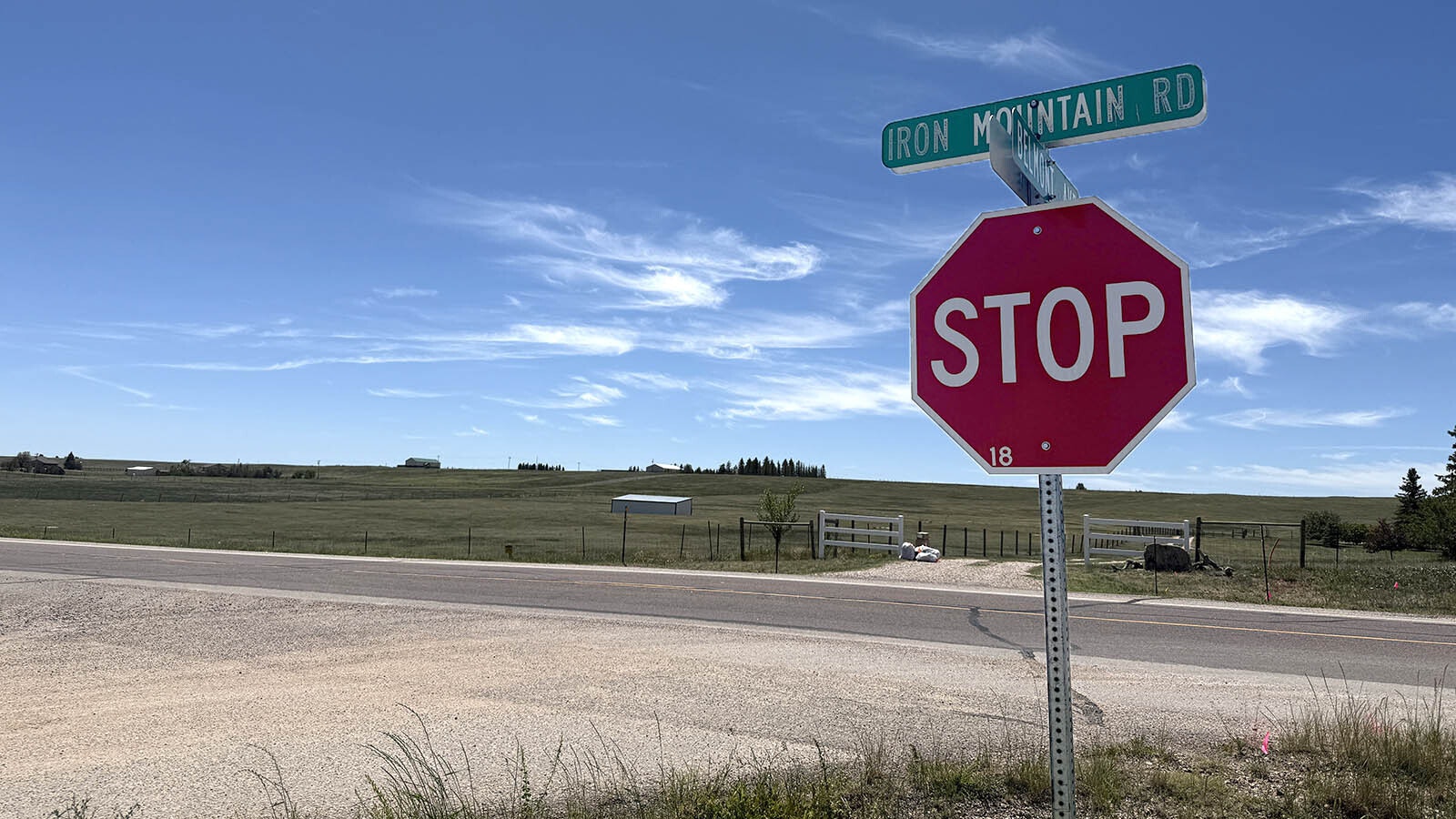Over the last few weeks of the Wyoming Republican primary race for U.S. Senate, challenger Reid Rasner touted some highly questionable political polling results he claimed showed he was in a dead heat with incumbent Sen. John Barrasso.
Not only wasn’t the election close, it proved Rasner’s paid polls to be incredibly inaccurate as Barrasso beat Rasner by 44 percentage points, earning a 68% total share of the vote in last week’s election.
Rasner had consistently expressed confidence in the strength of his chances, particularly when speaking to Cowboy State Daily in July. Although he claimed, “This is the closest anyone has come to beating John Barrasso,” Rasner ended up losing the primary by a larger margin than what Barrasso beat his second-place challenger Dave Dodson by in 2018.
The basis for Rasner’s confidence were two polls he paid for conducted by Advanced Targeting Research that showed him within its 3.88% margin of error among voters who had formed an opinion of the candidates in his race. Another poll provided to the Gillette News Record by the same firm showed Barrasso having a higher rate of disapproval than support, and 68% of respondents knowing who Rasner was.
Rasner said in a Tuesday statement provided to Cowboy State Daily that running for the U.S. Senate was the greatest honor of his life and he’s grateful to all who supported his campaign. He said the campaign raised issues that needed to be discussed and Wyoming is now stronger because of it.
However, he acknowledges that the polling results did not square with his campaign theme of transparency.
“In that spirit, we shared polling data that was provided to the campaign,” he said. “Had I known that the margins of the poll were as inaccurate as they were, I never would have allowed it to be sent out. The polling was clearly flawed.”
No matter whether Rasner gave out accurate polling information or not, his campaign was likely doomed by other factors such as Barrasso’s strong popularity and the missteps Rasner made along the campaign trail such as posting photos he took with people without their permission.
“His whole tactic was photobombing,” said Cowboy State Daily columnist Rod Miller. “By all indications, it didn’t work very well.”
Problems With The Industry
Dustin Olson, a managing partner with polling firm American Pulse, said political polls can be less trustworthy these days than they were in the past.
One of the biggest factors in those inaccuracies is caused by people lying when surveyed, he said.
This was one of the main causes for incorrect predictions made about the 2016 presidential race between Trump and Hillary Clinton, where many polls showed Clinton with a somewhat comfortable lead entering Election Day.
During that race, many people wouldn’t admit they were voting for Trump, which is a political science term known as the “Bradley effect,” named after a Black California governor candidate that wasn’t actually supported at the level polls indicated.
“Polling has been a problem ever since Trump was on the ballot,” Olson said.
Another hurdle, said former UW political science professor Jim King, is reaching a group of respondents who actually represent the voting populace, rather than a random group of people.
Olson agreed and mentioned how people with postgraduate degrees are much more likely to participate in polls than other people.
“It’s getting harder and harder for pollsters to draw up that sample in a short period of time,” King said.
Caller ID has also made it more difficult, as people can now easily avoid polling calls if they want to.
Olson said many media-sponsored polls are also far too long for the average person to fill out, mentioning how a person working two jobs would be unlikely to have 25 minutes to spare to fill out a poll. What also helps with accuracy, Olson and King said, is having real humans talk to the people being surveyed.
“The whole idea of getting people to respond to polls is so much more difficult,” King said.
Push Polls
Another factor are polls paid for by candidates.
Miller, who’s been involved with multiple campaigns, said the candidate gets to decide the wording of the questions, which can create leading questions and inherent bias, which is known as a “push poll,” or as Olson describes it, “public manipulation polls.”
“It’s what gives the profession a bad name,” he said.
Miller said to get an accurate response, these questions must be tailored in a fair and balanced manner. But when issue-based questions are asked on a poll before asking who the voter plans to vote for, Olson said it always leads them to an emotional, unbiased response.
When it comes to internal polling, Olson said it never pays off to be wrong.
The results of this polling shows candidates which demographics of people they need to focus on in their campaigns to be successful, which Mary Kay Hill said was a big part of the campaigns she worked on as a press secretary on former Senator Al Simpson’s 1990 run and media director for former Gov. Jim Geringer’s 1994 campaign.
“It tells you what demographics are supportive of certain issues, and what you need to focus on to get voters to come out and vote,” she said.
If a polling firm gets a result way off for a candidate, they’re probably not going to be hired again.
“No pollster who is consistently inaccurate is going to be able to sustain in the business,” King said.
What Are The Ramifications?
Olson said there can be a real impact to misinforming the public into believing candidates are doing better than they actually are. He said favorable polling results can inspire donors to give money when they otherwise might not have, thereby indirectly influencing the outcome of the race.
“It’s saying, ‘You can invest in me, I have a fighting chance,’” Olson said.
Rasner gave most of the money to his own campaign, loaning himself more than $1.1 million since launching his campaign. He spent nearly all of this, showing only $3,180 cash-on-hand as of July 31, according to Federal Election Commission filings. Divided by the 25,424 votes Rasner got in the primary election, he spent $43.26 per vote of his own money.
Often, the media is handed off these polls to help further the message, which is a pet peeve of Olson’s. Barrasso spent closer to $35.
“It’s to manipulate public perception,” Olson said. “Some media are pushing an idea, some just don’t understand.”
False polling results can also compound public mistrust in polling, leading to even more distrust in the future.
“It’s an increasing challenge to accurately poll big matters,” Hill said.
Olson mentioned a recent Fairleigh Dickinson poll showing Vice President Kamala Harris leading former President Donald Trump by 7 percentage points in the upcoming race, a result he finds highly inaccurate as most polls have both candidates competing very closely with each other.
“It’s just not real, it’s a dead heat race,” Olson said.
What Can Be Trusted?
When King became a professor around 40 years ago, there were only about a half dozen groups conducting regular polling. Now there are hundreds, of which King said a certain number have no idea what they’re doing.
“They’re not common, but those types of polls damage the reputation of polls generally,” King said.
Although polling can often get a bad rap, Olson, King and Hill pointed out there that people are just as interested in polls as ever and that people who work in polling are making legitimate strides to improve their craft and learn from their mistakes, creating new weighting to help balance out biases and misrepresentations.
Olson also said there still are reliable polls out there, mentioning the ones his firm conducts as well as those conducted by the Wall Street Journal, Fox News and New York Times/Siena University. King also mentioned how FiveThirtyEight Interactives ranks the reliability of the major polling organizations.
He also said websites that aggregate polling results based on the combined results of numerous polls and surveys tend to be more accurate, but have become less so as push polls become more prevalent.
King helped provide questions for polls conducted by the University of Wyoming’s Survey and Analysis Center during his time at the school. These polls have proven to be reasonably accurate, correctly predicting in 2022 that U.S. Rep. Harriet Hageman was beating former congresswoman Liz Cheney by a large margin five days before that election.
Leo Wolfson can be reached at leo@cowboystatedaily.com.





